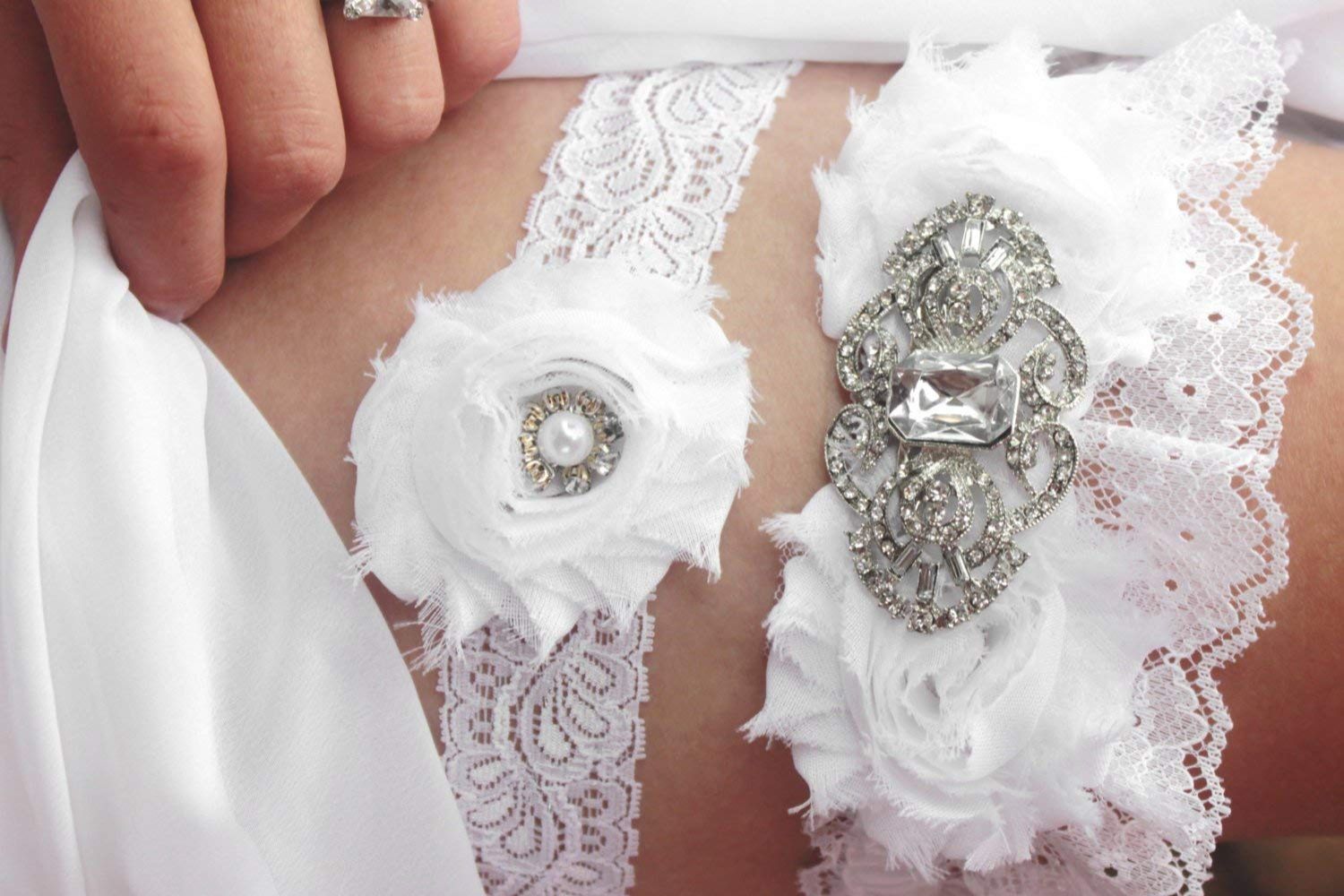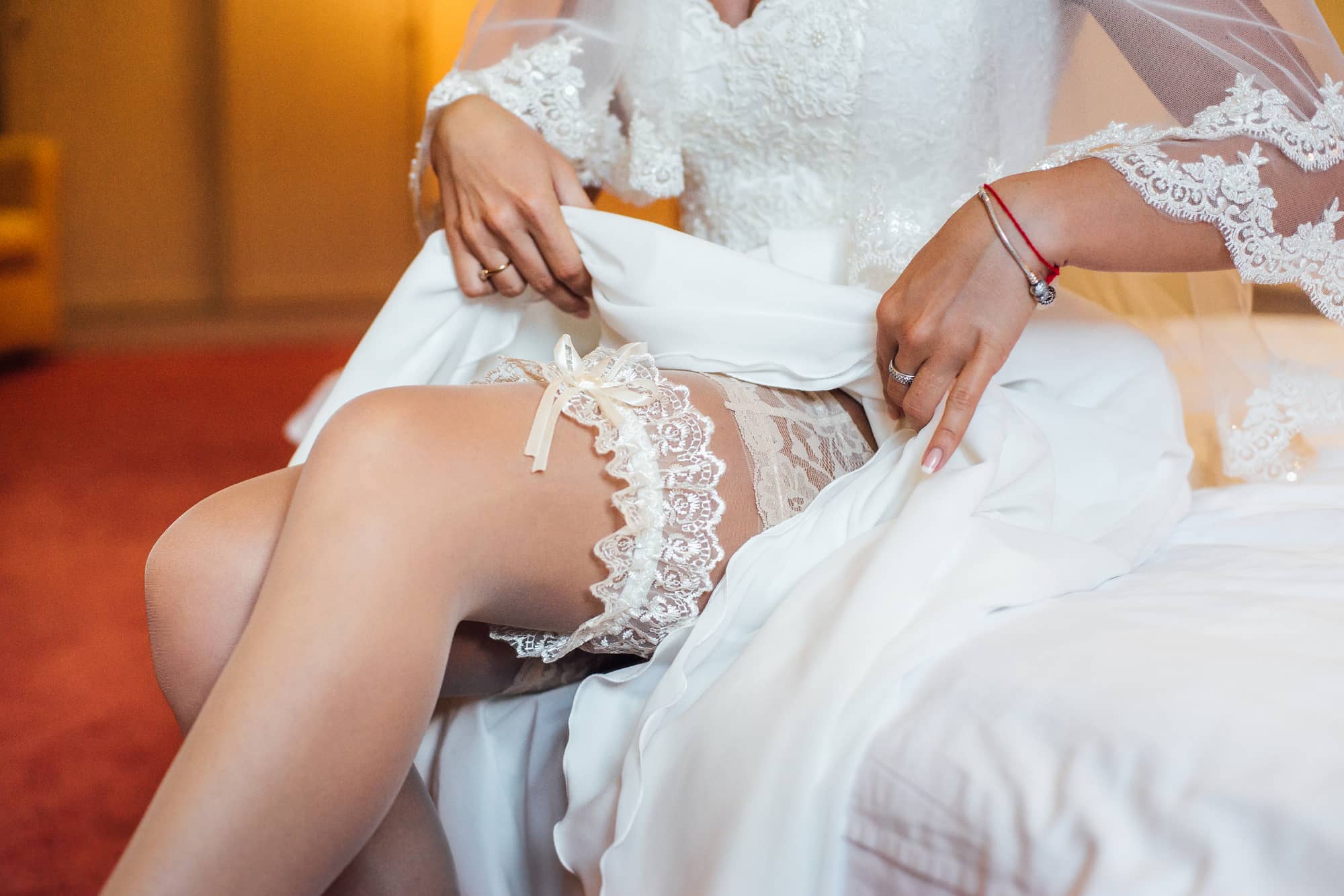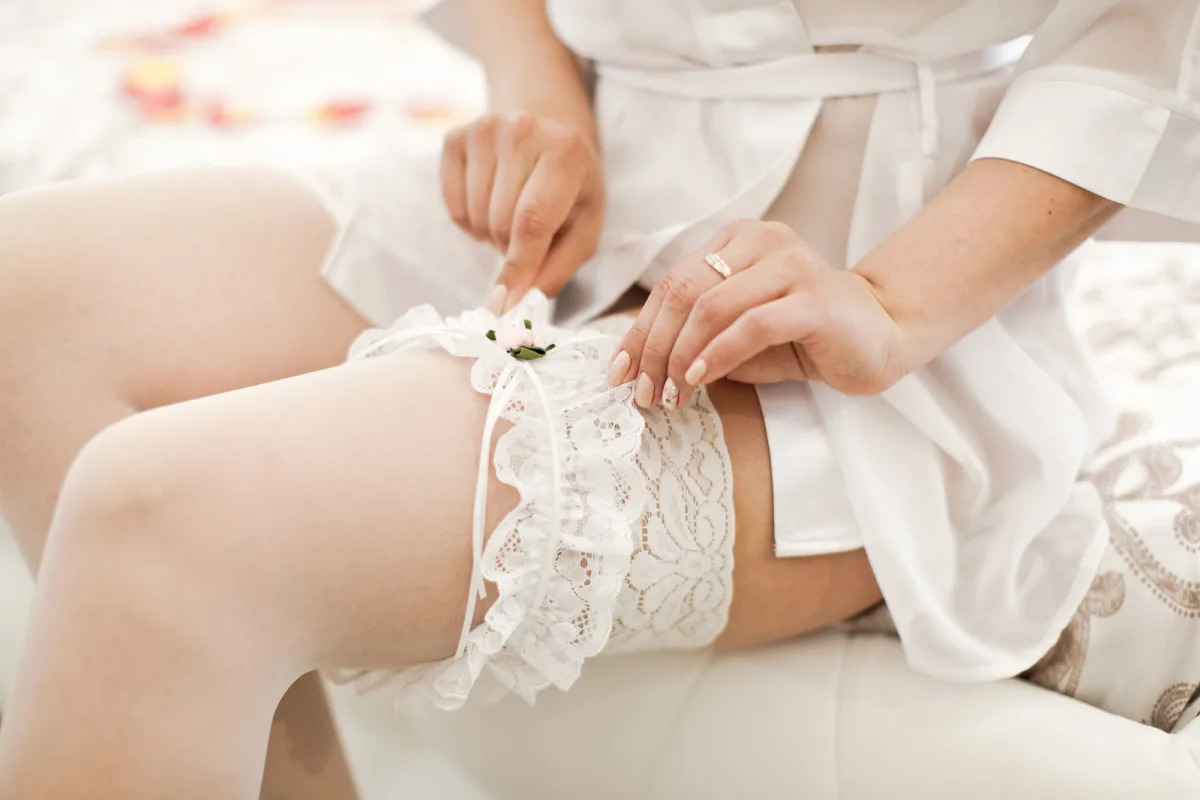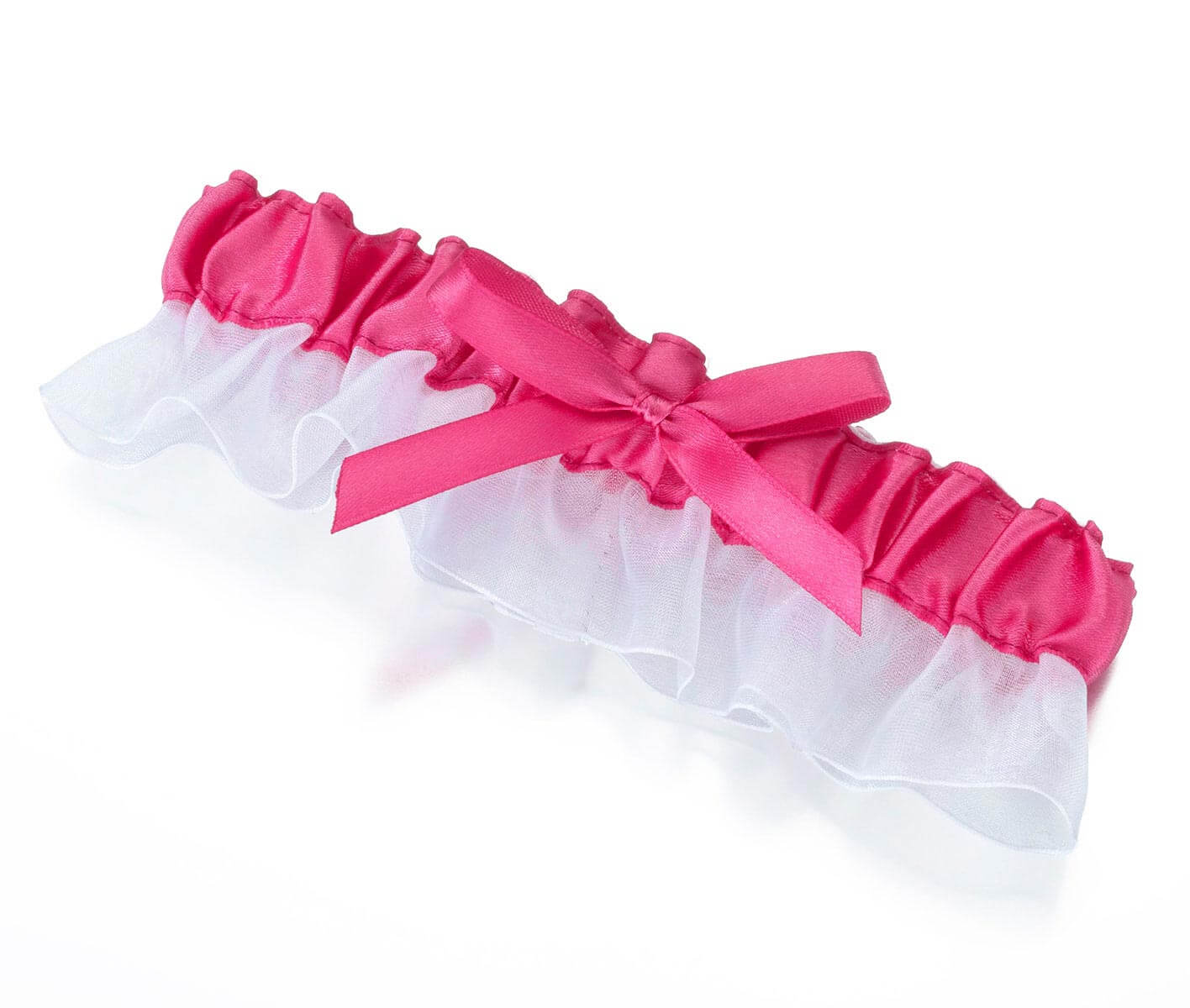Home>Latest Posts>What Is That Thing That They Do With The Garters At Weddings
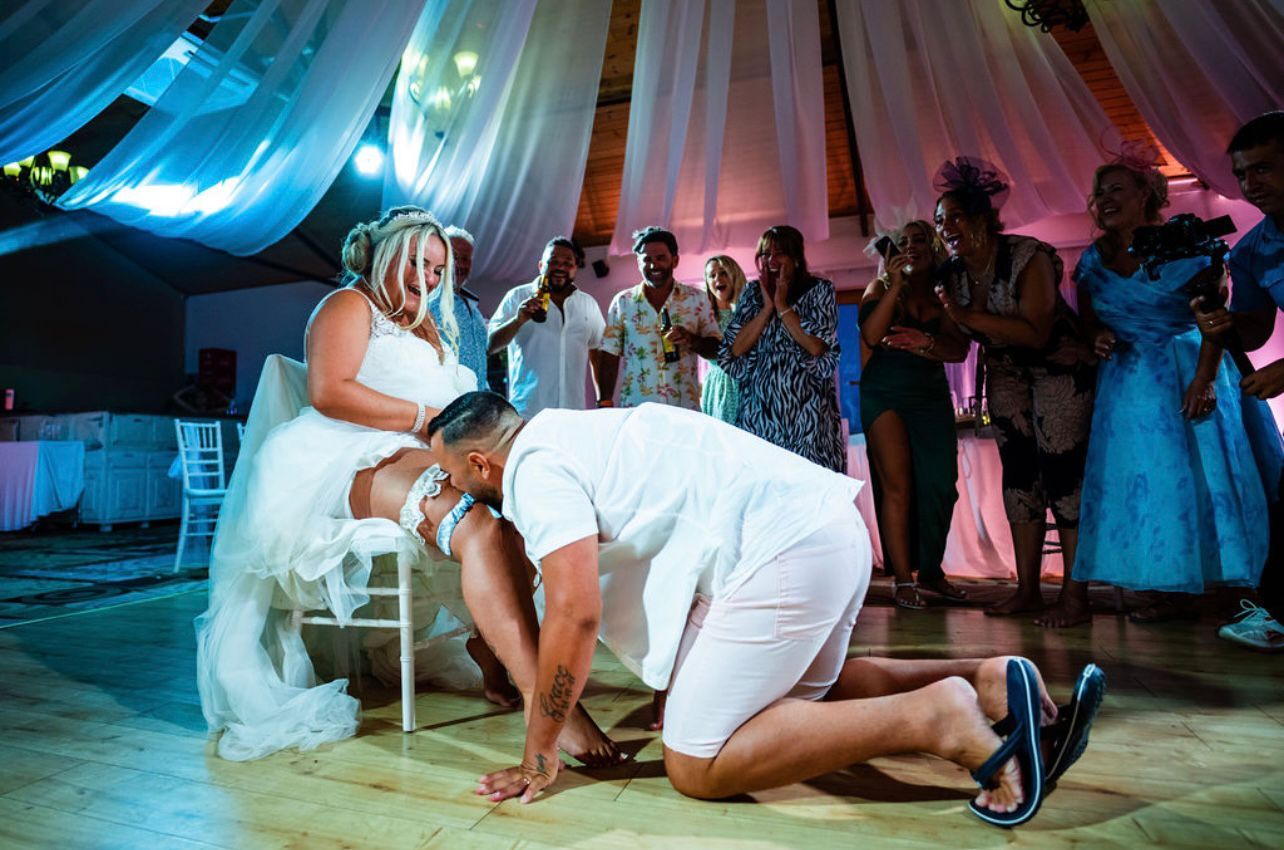

Latest Posts
What Is That Thing That They Do With The Garters At Weddings
Published: July 31, 2023
Discover the intriguing tradition of garters at weddings and unravel their significance for women, from history to modern-day customs.
(Many of the links in this article redirect to a specific reviewed product. Your purchase of these products through affiliate links helps to generate commission for Under-tec.com, at no extra cost. Learn more)
Table of Contents
- Introduction
- The Tradition of Garters at Weddings
- Origins and History of Garter Tossing
- Symbolism behind the Garter
- How the Garter Tossing Ritual Works
- Alternative Options to the Garter Toss
- Modern Interpretations of the Garter Tradition
- Controversies and Criticisms Surrounding the Garter Tradition
- Conclusion
Introduction
Weddings are filled with timeless traditions that add meaning and symbolism to the celebration of love and commitment. One such tradition that has gained popularity over the years is the garter toss. You may have witnessed this ritual at weddings, where the groom removes the bride’s garter and tosses it to a group of single men in hopes of bestowing good luck and fortune upon the next man to marry. But have you ever wondered how this tradition originated and what significance it holds?
The tradition of the garter toss dates back centuries and is steeped in history and symbolism. It has evolved and taken on various interpretations throughout time, but its essence remains the same – to bring a sense of fun and excitement to the wedding festivities. In this article, we will delve into the origins and history of garter tossing, explore the symbolism behind the garter, discuss how the ritual works, and examine alternative options for couples who choose to forgo this tradition.
Furthermore, we will explore modern interpretations of the garter tradition, as well as some controversies and criticisms that surround it. By the end of this article, you will have a comprehensive understanding of the tradition of garters at weddings and be equipped to make an informed decision about incorporating this ritual into your own special day.
The Tradition of Garters at Weddings
Since ancient times, the garter has been associated with notions of love, fidelity, and good fortune. It is a narrow band or ribbon worn just above the knee, often made of satin or lace, and adorned with decorative elements such as pearls, crystals, or ribbons. The tradition of incorporating garters into weddings can be traced back to European customs and folklore.
During the Middle Ages, it was believed that obtaining a piece of the bride’s clothing would bring good luck. This led to the practice of guests rushing to tear away pieces of the bride’s dress and undergarments. To avoid this chaos, brides started to voluntarily offer their garters as a means of appeasing the crowd and preserving their modesty.
As time went on, the act of the bride and groom exchanging garters became a symbolic gesture of unity and consummation. It signified the transition from singlehood to married life and served as a public declaration of their commitment to each other. The garter then took on the role of a cherished keepsake, something to be treasured and passed down through generations.
The tradition of tossing the garter into a group of single men arose from the belief that the person who caught it would be blessed with the next fortunate opportunity to marry. It was seen as a lighthearted and playful way to involve unmarried male guests, adding an element of excitement and anticipation to the wedding festivities.
Over the years, the tradition has evolved and adapted to suit contemporary tastes. Some couples choose to keep the garter toss as an integral part of their wedding, while others may opt for alternative rituals or exclude it altogether. Ultimately, the decision to incorporate garters into a wedding is a personal choice that reflects the couple’s values, beliefs, and desires for their special day.
Origins and History of Garter Tossing
The tradition of garter tossing has its roots in medieval Europe, where it was believed to bring good luck and fertility to the couple. In those times, it was common for wedding guests to view the consummation of the marriage as an auspicious event. As a result, they would eagerly wait outside the bridal chamber for proof of the union.
To satisfy this curiosity and prevent any unwanted intrusion, the bride would toss her garter out of the chamber to the waiting crowd. This act symbolized the couple’s commitment and sealed their union. In some cases, the groom would also throw the bride’s stocking as a gesture of his ownership.
Over time, the custom of garter tossing became associated with good fortune and the belief that whoever caught the garter would be the next person to marry. This led to a lively and often comical chase among the single men, as they competed to snatch the garter from the air. It was believed that the winner would be blessed with luck in finding a suitable partner.
During the Victorian era, the tradition of garter tossing expanded to include a garter belt. This garment held up the bride’s stockings and featured a small pocket where the garter could be tucked away securely. The groom would then remove the garter in an intimate moment, often using his teeth, before tossing it to the eager group of single men.
In recent times, garter tossing has become a staple of many Western weddings. The act is often accompanied by music and playful banter, adding to the festive atmosphere. However, it is important to note that the garter toss tradition is not limited to heterosexual weddings. Same-sex couples and non-binary couples have also embraced this tradition, adapting it to fit their unique celebrations.
It is worth mentioning that the popularity of garter tossing has declined in some cultures due to evolving social norms and the perception that it can be outdated or objectifying. As a result, couples have sought alternative ways to incorporate the symbolism and fun of the garter tradition into their weddings.
Now that we have explored the origins and history of garter tossing, let us delve into the symbolism behind this cherished wedding tradition.
Symbolism behind the Garter
The garter holds significant symbolism in the context of weddings, representing various meanings and traditions. One interpretation of the garter is that it symbolizes the bride’s transition from purity to consummation. Just as the removal of the garter signifies the end of her single life, it also represents the beginning of her married life.
The garter is often seen as a symbol of fertility and good fortune. As part of the ancient belief system, catching the garter was thought to bring luck in finding a suitable partner and being the next to marry. This symbolism has endured over the centuries, making the garter toss a playful and exciting tradition at weddings worldwide.
Furthermore, the garter serves as a keepsake and a reminder of the wedding day. Brides often choose to wear a garter that reflects their personal style or incorporates meaningful elements, such as heirloom lace or a charm with sentimental value. After the wedding, the garter can be preserved or passed down as a cherished family heirloom, representing the enduring love and commitment of the marriage.
Additionally, the act of the groom removing the garter holds symbolism of intimacy and unity. It is a moment of connection and anticipation, representing the couple’s shared journey into married life. As the groom removes the garter, it symbolizes his role as the protector and caretaker of his bride.
It is important to recognize that the symbolism of the garter may evolve and take on different meanings in modern times. Some couples may choose to interpret the tradition in their own unique way, assigning personal significance to the garter and its ritual in their wedding ceremony.
Now that we understand the symbolism behind the garter, let us explore how the garter tossing ritual works and its significance in modern weddings.
How the Garter Tossing Ritual Works
The garter tossing ritual typically takes place during the reception, following the exchange of vows and the meal. It is a moment of joy and excitement, signaling the transition from a formal ceremony to a more festive atmosphere.
Firstly, the bride wears the garter on her leg, usually just above the knee, hidden underneath her wedding dress. Some brides choose to have a separate toss garter, which is easier to remove and toss, while keeping a more ornate garter as a keepsake.
When the time comes for the garter toss, the emcee or DJ announces the event and gathers all the single men onto the dance floor. This creates an air of anticipation and ensures that everyone is aware of the upcoming tradition.
The groom then proceeds to remove the garter from the bride’s leg. This can be done discreetly and tastefully, or with a dash of playfulness and humor, depending on the couple’s preferences and the overall tone of the wedding.
Once the groom has successfully retrieved the garter, he prepares to toss it into the crowd of single men. The guests eagerly position themselves, ready to catch the garter and be deemed the next lucky individual to marry.
Similar to the bouquet toss, the garter is thrown over the shoulder of the groom, with single men reaching out to grab it. The one who catches the garter is celebrated and sometimes receives a token prize or a round of applause from the guests.
It is important to note that the garter toss tradition can be adapted to fit the couple’s preferences and the style of their wedding. Some couples may choose to add a unique twist to the ritual, such as incorporating a special song, using a prop for the groom to retrieve the garter, or involving the bridal party in a choreographed dance.
Now that we understand how the garter tossing ritual works, let us explore alternative options for couples who may choose to deviate from this tradition.
Alternative Options to the Garter Toss
While the garter toss tradition is widely embraced, it is important to remember that every wedding is unique, and couples may choose to deviate from certain traditions to make their celebration more personal and meaningful. If the idea of a garter toss does not resonate with you, there are alternative options to consider.
One popular alternative is the bouquet toss. Instead of tossing the garter, the bride can choose to throw her bouquet to a group of single women. This tradition symbolizes passing on the good fortunes of marriage and love to the next person to marry. It can be a fun and exciting moment, creating a sense of anticipation and celebration for the single women in attendance.
Another option is to include both single men and single women in a single toss. This can be achieved by having the bride and groom jointly toss both the bouquet and the garter into a mixed group of single guests. This inclusive approach ensures that everyone has a chance to participate in the tradition, regardless of gender.
For couples who prefer a more intimate celebration, they may choose to forego the garter and bouquet toss altogether. Instead, they can opt for a simple dance together or a special moment shared with their loved ones. This allows for a more personalized and meaningful experience, focusing on the couple’s connection and their commitment to each other.
Additionally, couples can create their own unique traditions or rituals that hold personal significance. This could involve exchanging personalized tokens of love or performing a symbolic act that represents their shared values and aspirations. The key is to choose a meaningful and memorable gesture that reflects the couple’s journey and celebrates their love.
Remember, there is no right or wrong when it comes to wedding traditions. It is essential for couples to feel comfortable and authentic in their choices, ensuring that their wedding day truly reflects their love story and their unique bond.
Now that we have explored alternative options to the garter toss, let us examine the modern interpretations of the garter tradition.
Modern Interpretations of the Garter Tradition
In recent times, the tradition of the garter toss has taken on new meanings and interpretations, reflecting the evolving landscape of weddings and societal norms. Couples have found creative ways to incorporate this age-old tradition into their modern celebrations, while infusing it with their own personal touch.
Many couples now view the garter toss as a light-hearted and playful moment during the wedding reception. It is an opportunity to inject some fun and humor into the event, creating a memorable experience for both the couple and their guests. Some couples even choreograph a special dance or select a unique garter to reflect their personalities and add an element of surprise.
Moreover, the garter toss tradition has become more inclusive, with same-sex couples and non-binary couples embracing and adapting the ritual to suit their unique celebrations. The practice of tossing the garter can be modified to include all guests, regardless of their gender, creating a joyful and inclusive atmosphere where everyone can participate.
As couples become more conscious of the traditions they incorporate into their weddings, some choose to add a philanthropic or charitable aspect to the garter toss. For example, instead of the groom tossing the garter, the couple may organize a raffle or auction where guests can bid for the opportunity to remove the garter. The proceeds can then be donated to a cause that holds special meaning to the couple.
Another modern interpretation of the garter tradition is to involve older couples or those who have been married for a long time. This not only adds a touch of nostalgia but also symbolizes the wisdom and guidance that these couples can offer to the newlyweds as they embark on their own journey of marriage.
Furthermore, some couples choose to reinvent the garter itself by incorporating elements that hold personal significance. They may use a family heirloom as the garter, infusing it with sentimental value and creating a connection to their heritage. Or they may opt for a customized garter that includes meaningful symbols or quotes that represent their love and shared values.
Overall, modern interpretations of the garter tradition emphasize personalization, inclusivity, and meaningful symbolism. Couples now have the freedom to adapt and reimagine this tradition to align with their individuality and relationship dynamics.
Now that we have explored modern interpretations of the garter tradition, let us dive into some controversies and criticisms that surround it.
Controversies and Criticisms Surrounding the Garter Tradition
While the garter toss tradition is enjoyed by many, it is not without its controversies and criticisms. Some individuals and couples have chosen to forgo this tradition due to various concerns and objections.
One criticism is that the garter toss can perpetuate gender stereotypes and objectification. The act of the groom removing the garter from the bride’s leg and tossing it to a group of single men can be seen as demeaning or outdated. It may reinforce the notion that women are objects to be “won” or passed on to the next person, rather than individuals with agency and autonomy.
Additionally, the ritual may make some guests uncomfortable, particularly those who are more reserved or have cultural or religious beliefs that discourage public displays of intimacy. For some, the idea of catching a piece of undergarment may be seen as inappropriate or offensive.
Furthermore, the pressure placed on single men to participate in the garter toss can create feelings of awkwardness or exclusion. Not everyone may feel comfortable or want to partake in this tradition, and forcing individuals into the spotlight can be uncomfortable and alienating.
Another criticism is that the garter toss tradition can be exclusionary to same-sex couples or non-binary couples. The traditional setup of a bride and groom, with the garter being tossed to a group of single men, may not align with the dynamics of all relationships. This can lead to couples feeling that they cannot fully participate in or adapt the tradition to suit their own celebration.
Given these concerns, an increasing number of couples are choosing alternative traditions or creating their own rituals that better align with their values and preferences. They opt for inclusive and less objectifying ways to involve their guests and celebrate their love and commitment.
It is important for couples to reflect on their own beliefs and consider the potential impact of the garter toss tradition on themselves and their guests. It may be an opportunity for open and honest discussions, allowing couples to make informed decisions about whether to include this tradition in their wedding celebration.
Now that we have examined some of the controversies and criticisms surrounding the garter tradition, let us conclude our exploration of garters at weddings.
Conclusion
The tradition of garters at weddings holds a deep-rooted history and symbolism that has evolved over the centuries. From its origins in medieval Europe to its modern interpretations, the garter toss has become a playful and exciting tradition that adds a touch of lightheartedness to wedding celebrations.
However, it is important to recognize that the garter toss tradition is not without controversy and criticism. Concerns regarding gender stereotypes, objectification, and inclusivity have led many couples to reconsider or adapt this tradition to better reflect their values and preferences.
Whether a couple chooses to incorporate the garter toss, explore alternative options, or forgo the tradition altogether, the decision should be based on what feels authentic and meaningful to them. Every wedding is unique, and it is important for couples to personalize their celebrations in a way that celebrates their love and respects their guests’ comfort levels.
As traditions evolve and societal norms shift, it is up to future couples to redefine and reimagine the garter tradition, creating inclusive and respectful practices that reflect the diversity of love and relationships.
Ultimately, the choice of whether to incorporate garters at weddings is a personal one. Couples should consider their own values, beliefs, and desires for their special day, while keeping in mind the importance of inclusivity, consent, and respect for all individuals involved.
Whether through the traditional garter toss, alternative options, or the creation of new rituals, the goal is to make the wedding celebration meaningful, memorable, and a true reflection of the couple’s love story.
